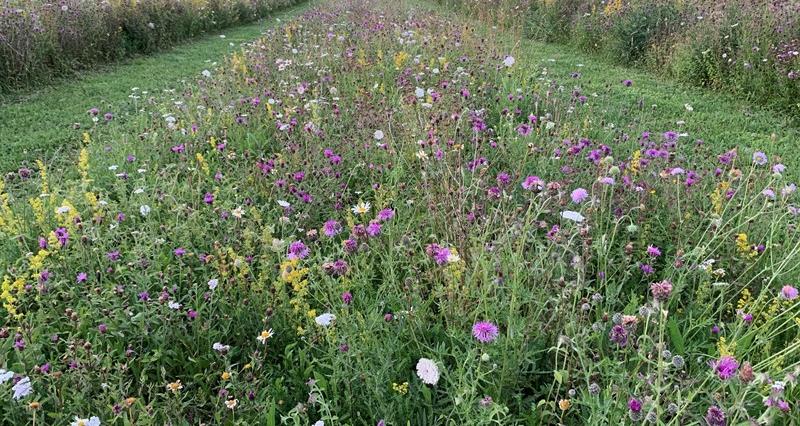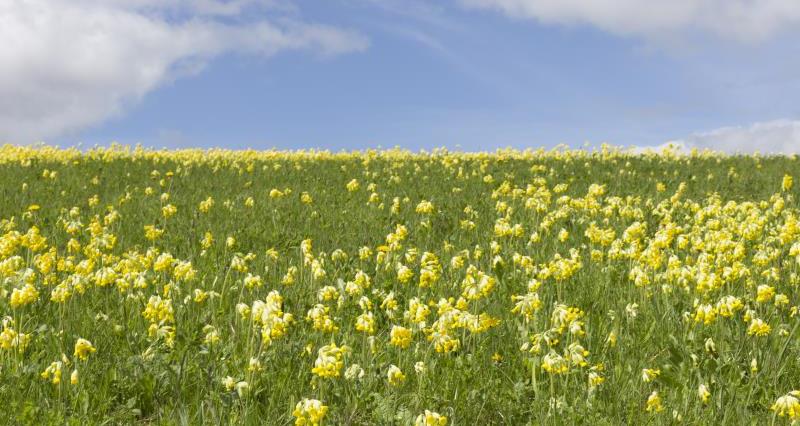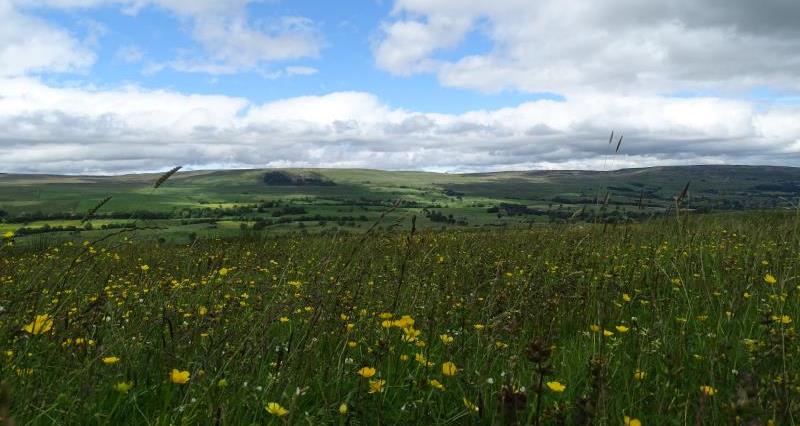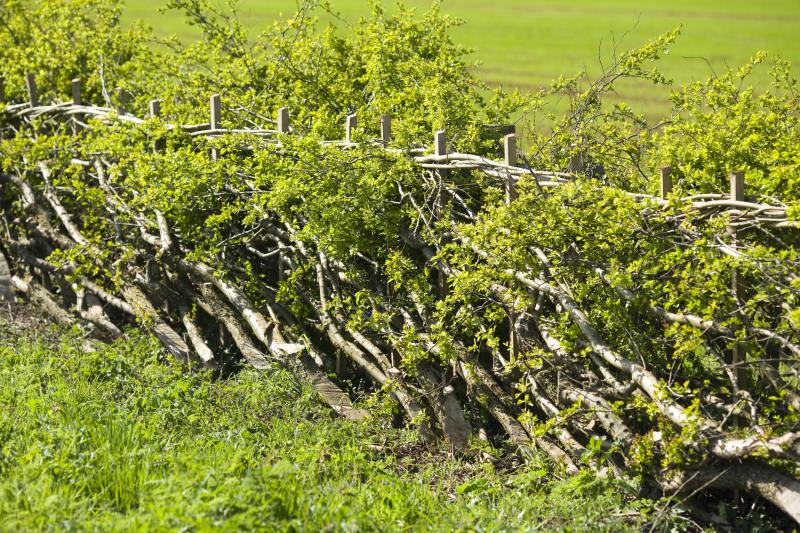1. What is BNG?
Biodiversity Net Gain is an approach to development which means that habitats must be left in a measurably better state than they were in before the development. This means that applicable developments in England will need to restore any biodiversity lost during the building phase and deliver a 10% minimum boost to the area’s biodiversity unless they are exempt.
BNG became mandatory for major developments from 12 February 2024 and small sites from 2 April 2024.
Mandatory BNG will apply to NSIPs (Nationally Significant Infrastructure Projects) from November 2025.
We'd love to hear what you think. How is BNG affecting you?
Members of the Environment and climate community can leave a comment at the end of this article.
Small sites are defined as:
- Residential developments where the number of dwellings to be provided is between 1-9 on a site area less than 1ha or where the number of dwellings to be provided is not known the site area is less than 0.5 hectares.
- Non-residential sites where the floor space created is less than less than 1,000 square meters or where the site area is less than 1ha.
The Environment Act makes BNG a requirement of receiving planning permission, with development unable to begin unless a biodiversity gain plan has been prepared by the developer and if correct and achievable approved by the LPA (Local Planning Authority). Some LPAs have previously required a BNG uplift higher than 10%, however the planning practice guidance on BNG now states that plan-makers should not seek a higher percentage.
BNG can be achieved by creating or enhancing biodiversity in association with a development, this can be onsite, offsite or through statutory biodiversity credits as a last resort. The habitat created should be the best replacement for the habitat lost through development.
Onsite biodiversity gain is the enhancement of the habitat’s biodiversity value where the development takes place. Offsite biodiversity gain is enhancement carried out on a separate site to the development, this gain is secured through a long-term agreement. Statutory biodiversity credits can be purchased by developers to meet the biodiversity gain objective, credits will be created through independent habitat enhancement.
Statutory biodiversity credits should only be used as a last resort by developers. The government has priced credits to disincentivise use and to carry a multiplier – you would need to buy two statutory credits for every one biodiversity unit needed. Government guidance and the current credit prices are available on: GOV.UK | Statutory biodiversity credit prices.
The government has committed to providing £15.67 million over the transition period to local authorities to help support preparation for and delivery of mandatory BNG.
2. How do LNRS impact BNG?
Local Nature Recovery Strategies or LNRS is a legal obligation created under the Environment Act. The principal aim of the strategies is to create space for nature to deliver BNG.
The strategies will help identify the priorities and locations for nature recovery in an area which could be delivered through BNG habitat creation. If an area of land has been identified for nature in an LNRS it could affect how BNG units are calculated in the biodiversity metric.
Exactly how this is applied will depend on the ‘strategic significance’ of the BNG location and habitat type.
This will impact those thinking of creating BNG units for the market by increasing the units created, but also those planning a development who might have to create more BNG units as a result.
Within the planning process, the Local Planning Authority must take account of the LNRS in a Local Plan. The government will provide separate guidance to explain what this means in practice. The NFU is concerned about the impact the strategies could have on planning applications and is lobbying government for this guidance and clarity.
The strategies could also serve other purposes in the future. It is currently unclear exactly how LNRS could affect ELMs (Environmental Land Management schemes), but it could be used to incentivise actions that contribute to LNRS priorities. The NFU believes that LRNS actions should be optional and must not prevent access to funding.
There will be 48 LNRS created by local authorities across the country, most of which are currently in the early stages of development. It important that farmers and landowners have the opportunity to engage in the development of their local strategy to ensure it works for their farm businesses including their own ambitions for nature.
3. How could BNG affect farmers?
Farmers may encounter BNG requirements as a result of their own development, and/or to deliver BNG for the private market.
BNG became mandatory for major developments from 12 February 2024 and small sites from 2 April 2024.
Mandatory BNG will come into force on 12 February 2024, however this won’t apply to small sites until April 2024. Despite some exemptions to BNG, farm developments may still be impacted by the requirement to deliver a 10% minimum boost to the area’s biodiversity. It is important to understand if a development is exempt or if BNG applies – see question 5 for more information.
For some farmers, the opportunity for private sector investment in environmental land management practices may provide a useful new income stream. There may be many activities that deliver BNG alongside their farming practices, such as the restoration of ponds and hay meadows, as well as activities which take land out of production, such as creating woodlands.
Delivering offsite BNG will involve long-term habitat creation of at least 30 years and often in perpetuity.
Offsite BNG land must be registered and secured through a long-term agreement, either a Conservation Covenant or a planning obligation (section 106 agreement).
Conservation Covenants are legally binding agreements between a landowner/manager and responsible body/bodies. The government has produced guidance on Conservation Covenant agreements which is available at: GOV.UK | Getting and using a conservation covenant agreement.
Before signing a long-term BNG agreement, a range of factors and impacts must be considered, these include:
- What is the purpose the agreement?
- How long does the agreement last?
- Is the agreement personal or does it run with the land?
- What happens to the land at the end of the agreement?
- Tax implications; will the tax status of the land remain the same or change if the use of the land changes? Will this impact the income and capital tax status of the land?
- Is it compatible with your tenancy or other agreements/rights?
These are potentially complex and long-term arrangements. Farmers and landowners need to ensure that they take legal and professional advice to ensure that they fully understand the potential implications before entering into any agreements.
It is also important to ensure that the agreement itself is well drafted and that the terms are right for your specific situation.
Read our explainer: Environmental markets – are they right for you?
4. How can I create, sell and manage BNG units?
There are several ways in which farmers and landowners can go about creating, selling, and managing BNG units, this will depend on the individual business. Farmers and landowners looking to explore BNG further could:
- Consult a land agent, broker, or other professional advisor.
- Speak with a local developer.
- Speak with their Local Planning Authority.
- Speak with a habitat bank operator.
In most cases, farmers and landowners will need to seek professional advice to help them deliver off-site BNG. This would include an ecologist to support with the Biodiversity Metric calculations and legal advice on long-term habitat creation agreements.
It is important that anyone considering delivering for the off-site BNG market understands what’s involved in creating, selling and managing BNG units.
The process could be different for each business; below is an example of some of the steps that farmers and landowners interested in creating habitats for the BNG market could follow:
- Consider how and if long-term habitat creation for BNG is right for your business and if, for example, BNG could be combined with other environment payments on the area of land such as nutrient offsetting.
- Explore what professional advice may be needed and which route to market will be taken e.g. a local developer, a habitat bank operation, a broker etc.
- Engage with the Local Authority to find out what demand there is in your local area, what habitat may be needed in the future, and in the development of the LNRS.
- Use the BNG metric to calculate how many biodiversity units are currently on the site and what kind of habitat could be created; it is recommended to use a qualified ecologists to do this.
- Agree to deliver an off-site BNG habitat for 30 years by legal agreement/s with the buyer/broker – through Conservation Covenants or planning obligations (section 106). Take legal advice before signing any agreements.
- Once an agreement is in place, the land should be registered as a BNG site and allocated to a development – there is a national public government register of off-site BNG land. The developer/broker can do the registration with landowner consent.
- Create or enhance the habitat and follow any ongoing management and monitoring requirements of the land for at least 30 years.
The government guidance and blog outline further detailed steps and has been specifically developed for farmers and landowners with input from stakeholders such as the NFU.
You can also read about NFU member and Estate Custodian Beilby Forbes Adam and how he is participating in a pilot scheme to assist in the preparation for mandatory BNG.
5. How will new developments be impacted?
BNG became mandatory for major developments from 12 February 2024 and small sites from 2 April 2024. Mandatory BNG will apply to NSIPs (Nationally Significant Infrastructure Projects) from November 2025.
Exempt developments are those that don’t need to meet the mandatory BNG requirements. The Environment Act already made exemptions for permitted development (developments where planning permission isn’t needed) and urgent crown development. Alongside this, the biodiversity metric allows temporary impacts which can be restored within two years to be excluded from calculations and would also exclude developments which have no impact on biodiversity.
The 10% mandatory BNG requirement does not apply to Irreplaceable Habitats (for example, blanket bog lowland fens, limestone pavements, coastal sand dunes) that could be lost due to a development. Instead, a more bespoke approach must be taken. This is outlined in the government guidance on irreplaceable habitats.
Following the government’s BNG consultation, further exemptions have been confirmed in regulation and include:
- Development with no impact on priority habitat and where impacts fall below the specified ‘de minimis’ threshold – less than 25 square metres (e.g. 5m by 5m) of habitat, or 5 metres of linear habitats such as hedgerows.
- A BNG site.
- Householder applications such as an extension.
- Certain self-build and custom build developments.
The NFU lobbied for farm developments to specifically be exempt from BNG and is disappointed this has not taken forward by government. Therefore, farm developments, unless covered by one of the above exemptions, could be impacted by the requirement to deliver a 10% minimum boost to the area’s biodiversity.
The BNG requirements could add additional cost to a farm development. Planning applications may also take longer to be processed due to the increased demand and limited resources of councils.
How a farm development is impacted by BNG will be specific to that development. Farmers and landowners planning a development should therefore take independent planning advice to understand exactly if and how BNG requirements may affect their development.
6. How do you calculate an area’s biodiversity value?
The government’s biodiversity metric can help assess an area’s value to wildlife. The metric uses habitat features to calculate a biodiversity value; this value is known as a ‘biodiversity unit’.
The biodiversity metric can be used to calculate the lands’ current biodiversity value and how a development, or a change in land management, will change the biodiversity value of a site. For example, building houses, planting a woodland, or sowing a wildflower meadow.
Developers must use the metric to calculate the biodiversity value for a development’s biodiversity net gain plan; this must show at least a 10% uplift in the biodiversity value. The metric can however be used by anyone including farmers interested in creating a project which generates BNG units and/or when planning a development. It is recommended to use the metric with ecological advice.
The metric has already undergone several reviews, consultations, and updates, all of which the NFU has actively engaged with. Most recently Defra published the statutory biodiversity metric tool and guidance. It will be mandatory to use this metric for mandatory BNG.
Alongside the main biodiversity metric, the government has also created an SSM (Small Sites Metric). This is a simplified version and has been specifically designed for use on small development sites.
7. Can you stack BNG alongside other environmental payments?
The government has engaged with a variety of stakeholders including farmers and land managers to produce a collection of guidance on BNG. This includes guidance on selling BNG units and combining environmental payments with BNG. A brief summary of the guidance is outlined below, the full guidance can be found on: GOV.UK | Biodiversity Net Gain.
Farmers and landowners will be looking at how they can deliver multiple environmental outcomes and payments (public and private) on the same parcel of land. Stacking is when multiple credits or units from different environmental markets (carbon, BNG, nutrients, flood alleviation etc.) are sold separately from an activity on a piece of land.
The ability to stack multiple environmental outcomes is dependent on the outcome and the scheme. The government guidance confirms that farmers and landowners:
- Can stack and sell biodiversity units and nutrient credits from the same activity on a piece of land.
- Cannot typically use an agri-environment agreement to create, enhance or manage a BNG habitat. Where the agri-environment option did not directly pay to create, enhance or manage the BNG such as when building walls or maintaining heritage features, it could be used for BNG.
- Cannot use any habitat creation or enhancement that has already been sold to a private company as part of their CSR (Corporate Social Responsibility) for BNG.
8. How you register land delivering off-site BNG?
The biodiversity gain site register records allocations of off-site BNG.
Government regulations set the eligibility criteria which must be met for land to be registered. In summary, this criteria will require that habitats are improved for biodiversity, and these improvements are available to a development as biodiversity units where planning permission has been granted for that development.
These habitat enhancements must be secured by an appropriate legal agreement for at least 30 years. Biodiversity gain sites must be registered and allocate off-site gains to a development on GOV.UK. There is a fee to apply to register BNG sites which will cover the costs of running the register.
9. How is BNG managed in the planning process?
BNG is part of the planning process for applicable developments. The government has therefore produced BNG planning practice guidance for LPAs and planners.
The guidance covers the process and submission of a BNG plan which must be submitted by the developer.
Applicable developments/developers will need to submit BNG information (in the form of a BNG statement) alongside their planning application. A BNG plan is then submitted and must be approved by the LPA prior to commencement of the development.
The plan must show at least a 10% uplift in the biodiversity value. To support this the government have produced a biodiversity gain plan template and guidance.




